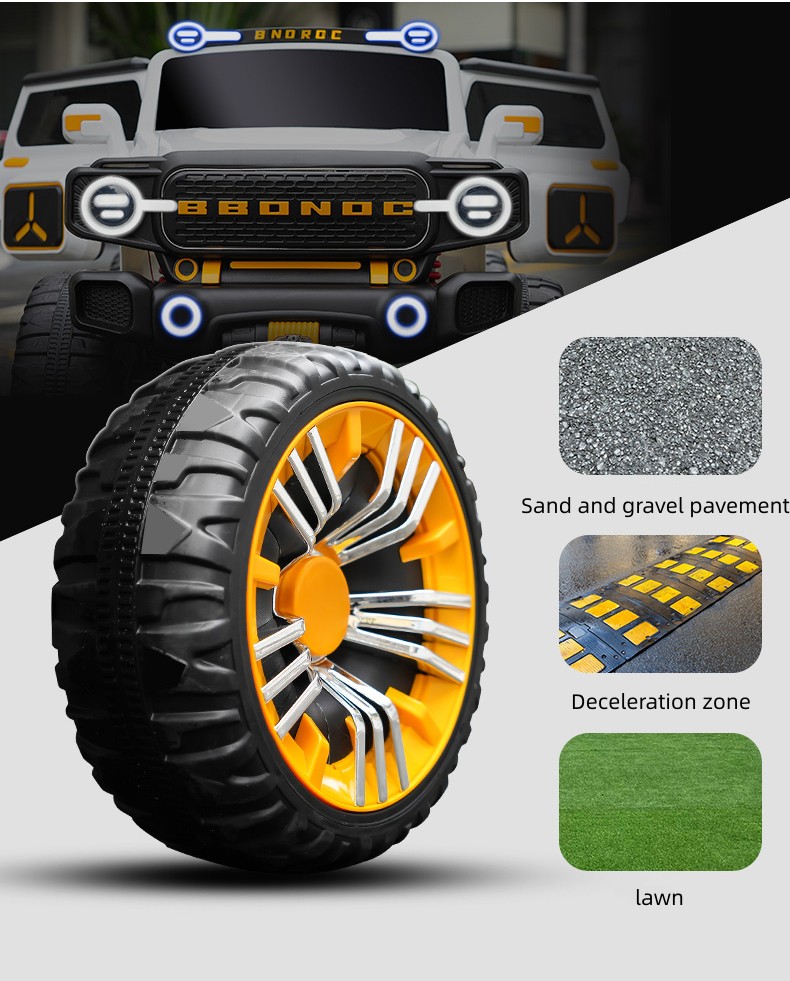Choosing the Right Battery for Kids' Electric Ride-On Cars
Understanding Battery Options for Children's Motorized Cars
As children grow, their desire for adventure and exploration often leads to the allure of motorized toy cars. These electric vehicles provide an exhilarating experience that mimics real-life driving, allowing kids to navigate their own little world. However, at the heart of every motorized car lies a crucial component the battery. Understanding the various battery options available for children’s motorized cars ensures an enjoyable and safe experience for young drivers.
The Importance of Choosing the Right Battery
The battery is the powerhouse of any electric vehicle, including children’s motorized cars. It determines how long the vehicle can run, how fast it can go, and overall performance. A proper battery not only provides adequate power but also ensures safety and longevity of the toy. Selecting the right battery should take into consideration factors such as capacity, type, and compatibility with the motorized car.
Types of Batteries
Children’s motorized cars typically utilize either lead-acid batteries or lithium-ion batteries. Each type has its benefits and drawbacks
1. Lead-Acid Batteries - Pros These batteries are generally more affordable and widely available. They are robust and can provide dependable performance for shorter drive cycles, making them suitable for toy vehicles. - Cons They are heavy, which can affect the car's speed and maneuverability. Additionally, they have a shorter lifespan compared to lithium-ion options and can take longer to recharge.
2. Lithium-Ion Batteries - Pros Lighter and more compact, lithium-ion batteries enable faster speeds and longer driving times. They also have a longer lifespan, which means less frequent replacements. Furthermore, they typically charge faster, allowing for more playtime in a shorter period. - Cons The initial cost is higher, and they require proper handling and care to ensure safe operation.
battery for children's motorized car

Battery Capacity and Runtime
Battery capacity is measured in ampere-hours (Ah) or milliampere-hours (mAh). A higher capacity battery generally means a longer runtime. For example, a motorized car with a 12V 7Ah lead-acid battery can run for approximately 1-2 hours depending on the weight of the driver and the surface it’s being operated on. On the other hand, a lithium-ion battery with a similar voltage might provide a more extended runtime due to its efficiency.
Safety Considerations
When it comes to children’s toys, safety is paramount. Parents should ensure that the battery is properly secured in the vehicle and that all wiring is insulated against accidental contact. Use batteries specifically designed for children’s motorized cars and avoid using batteries from other devices, as this can pose safety risks. Additionally, regular maintenance checks should be conducted to prevent any electrical hazards.
Maintenance and Care
To maximize the life of the battery, proper care and maintenance are essential. For lead-acid batteries, regular charging and avoiding complete discharges can prolong their lifespan. Lithium-ion batteries should also be charged routinely, and it’s beneficial to avoid letting them deplete completely before recharging. Storing the batteries in a cool, dry place helps to maintain their integrity and performance.
Conclusion
In conclusion, understanding batteries for children's motorized cars is essential for ensuring a safe and enjoyable experience. By selecting the appropriate battery type, considering capacity, and maintaining the battery properly, parents can enhance their child’s adventures while ensuring safety. Investing time in understanding these components will not only elevate playtime but also impart valuable lessons about responsibility and care in young drivers. Happy driving!
-
Children's Tricycle: Enlarged Seat, Sunshade & Safety Push BarNewsAug.31,2025
-
Sports Kids Bike: High Carbon Steel Argon Arc Welded Frame | Beautiful GiftNewsAug.30,2025
-
Ultimate 24V Children's Car: Power, Fun & Safety for KidsNewsAug.29,2025
-
Children's Electric Car Ride Ons: 2-Seater, Bumper & Audi ModelsNewsAug.28,2025
-
Understanding Voltage in Battery for Children's Motorized CarNewsJun.05,2025
-
Safety Features to Look for in an Electric Car for KidsNewsJun.05,2025
